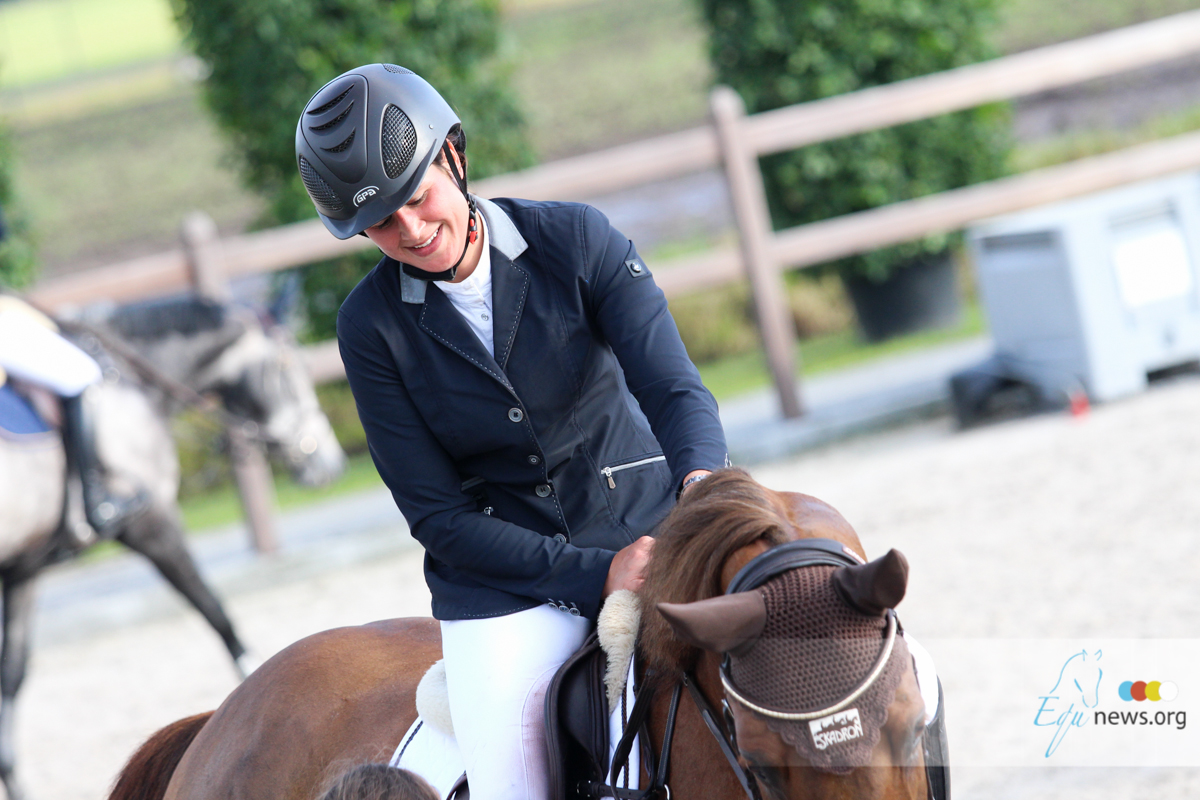Horse riding is becoming an increasingly popular activity. The attraction is simple – the horses… the physical challenge… the fact that anyone can begin to learn, young and old(er). If you are new to riding, you might be overwhelmed by all the opinions that are out there. Here are a few ideas to help you navigate your way Safety first! Learn what you need to do to keep yourself safe, especially for the first few months. Although most horses are well trained to not do anything unexpected, horses are flight animals and really can’t be completely trusted at any time. Be aware of your personal space when you work around the horses. Keep your feet clear of hooves, maintain an appropriate distance (don’t let the horses rub on you or nibble on you), and make sure the horses hear you and know where you are as you approach them or work around them. Focus on your seat development. The seat is the source of all great riding. The seat is also the hardest area of the body to coordinate. You’ll find that using your hands and legs will be much much easier than learning to follow the horse and influence him with your seat. But there is no better way. If you are lucky enough to find someone who will lunge you, there is no better way to start riding. If not, find an instructor who puts a lot of emphasis on seat development early in your riding career. Develop excellent ground skills. If you have a chance to learn to work the horse from the ground, grab it! They say that you only ride as well as you handle a horse from the ground, and I think there is a lot of truth to that. Take lessons, watch others and practice as much as you can. There are so many ways you can learn ground work: showmanship, round penning, lunge work (for the horse), in-hand showing… there must be others. The more you can do from the ground, the better you will be prepared to ride. Your horse will also know you as a communicator/herd leader. Volunteer or work at a barn. More time spent with horses means more experience. They often say that if you want to know something really well, you have to learn it from the “ground up.” Nothing can be truer in riding. If you can get a paid job working at a barn, even for one day a week, you will learn invaluable skills that will propel you in the right direction. If not, consider volunteering. Working alongside experienced staff will give you the opportunity to learn and get feedback – reducing your learning curve by a lot. Check and double-check your tack. In many riding schools, you will be required to groom and tack your own horse. There is nothing better than spending some time with the horse you’re going to ride, so get in there and get dirty! When you tack up, make sure you know how everything is secured. Check your tack before you go into the ring, and then check it again before you mount. If you are unsure of anything, be sure to ask your instructor before you get on. Your tack will keep you safe – but only if it is on properly! Ride more than once a week. It might be difficult to ride multiple times in a week in a riding school, but take the opportunity if it comes your way. Take two lessons a week, or see if you can eventually part-board a horse. Maybe you can rent a horse for a “practice ride.” No matter how you do it, your skills will improve exponentially if you can increase your time in the saddle. Breathe in rhythm with the horse’s movement. Even if you are otherwise athletic and have a lot of experience in other sports, your initial riding experiences might be different than what you are used to. One of the things that go first when you begin to trot and canter is remembering to breathe. A good trick is to force yourself to breathe in conjunction with your horse’s movement. If you are posting, breathe on every other post. In canter, breathe every other up stride. Force your breath if you have to initially, until your body takes over. Otherwise, you will likely hold your breath and soon end up panting and losing coordination. through your first steps (walk, trot and canter). Find a great instructor. In some areas, you might have trouble finding multiple instructors to choose from. But work on it. Watch your prospective instructor teach a few lessons. Take a look at the condition of the school horses and other barn animals. Get a tour and see what the atmosphere of the barn is like. Finding an ideal barn and instructor is like finding a great friend or job. It takes time and you have to try it out for a while to know if it’s a good fit for you. Do as you’re told! Your instructor will (should) always have your best interests in mind. So if she tells you to drop your hands, drop them. If she shows you how far to open your rein, or to soften your knees on the saddle, do your best to follow her directions. Sometimes, what you need to do may feel awkward or even wrong to your muscle memory. That might be because your body has normalized the wrong feeling. Just give it a good try. Ask questions. BUT… do ask questions when things seem unclear. If you want to be an independent thinker, you do need to know why you are doing things at certain times. There is no other way. However, there is a protocol to asking questions. While you are riding, just keep riding. Save the talking for in between the riding spurts, or for the end of the lesson. Don’t be gabbing while she’s giving instructions, because when you are on the horse, there is little time for conversation. That is the time you should be “do”-ing. Be patient. If you feel like you’re all thumbs, don’t worry! Pretty much everything to do with horses, including the riding part, is going to be different than anything you’ve ever done. Just figuring out how to put a bridle on might take you weeks to really do easily, simply because of the straps and buckles that we don’t normally manipulate otherwise.
Tips for beginning riders; Learn to accept failure and ...
-
categories: Lifestyle



